As preservationists from all over the country converge in Philadelphia this summer for Forum 2014 it is only appropriate to highlight the fabulous and historic food venue that will host the conference reception on July 18th—the Reading Terminal Market. The Market itself is a real preservation success story. It is a landmark building (recognized as a NPS National Historic Landmark since 1976 and documented as an engineering marvel by the Historic American Engineering Record ) with its own storied history which has survived challenging and uncertain times to delight a new generation of Philadelphians and visitors. 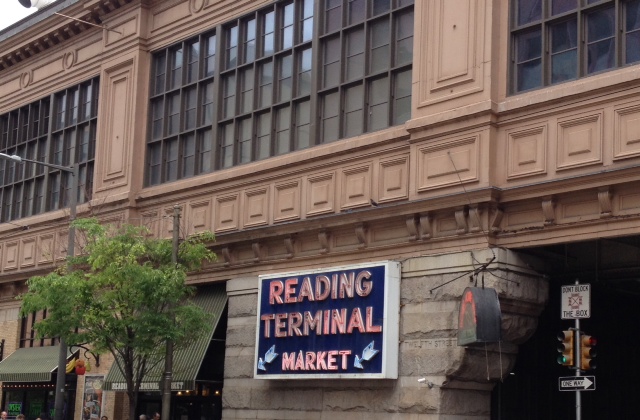 The tradition of farmers’ markets is a long standing one in Philadelphia dating from the city’s earliest days in the late 18th century. Informal markets for the sale of fish and produce were set up close to the Delaware River on Market Street (then called High Street) as early as 1680. The first permanent market house was constructed soon after at Market Street and 2nd Street. By 1809 the City had constructed open air market sheds in the middle of Market Street from 2nd Street to 6th Street. These sheds along Market Street were called “shambles” and provided little more than a roof and wooden tables, but they were heavily used until the city dismantled them in 1859 due to concerns about street traffic and sanitation. The tradition of open air markets continued in other parts of the city, such as the famous and still vibrant Italian Market along 9th Street in South Philadelphia. With the closing of the Market Street shambles, a new indoor market house, the Butcher’s and Farmers Market was constructed in 1860, close to the site of the current Reading Terminal Market. Another market house, the Franklin Market moved in next door in 1885. So, when plans were announced in 1890 for the Philadelphia and Reading Railroad to acquire that block of Market Street to build a large consolidated terminal, the market vendors refused to relocate. They negotiated a deal to have a new market constructed beneath the new train shed and tracks, the beginning of today’s Reading Terminal Market. As the magnificent new eight-story Italian Renaissance Revival style Philadelphia & Reading Railroad Terminal was being built along Market Street in 1891, an elaborate 95 foot tall train shed was being built just north of it with ample room for the market on the ground floor. The large train shed had a distinctive arched roof covering thirteen elevated tracks 25 feet above the ground. When the new Reading Terminal Market beneath those tracks opened in 1892, it had a state of the art basement refrigeration system and marble counters for all the vendor stalls.
The tradition of farmers’ markets is a long standing one in Philadelphia dating from the city’s earliest days in the late 18th century. Informal markets for the sale of fish and produce were set up close to the Delaware River on Market Street (then called High Street) as early as 1680. The first permanent market house was constructed soon after at Market Street and 2nd Street. By 1809 the City had constructed open air market sheds in the middle of Market Street from 2nd Street to 6th Street. These sheds along Market Street were called “shambles” and provided little more than a roof and wooden tables, but they were heavily used until the city dismantled them in 1859 due to concerns about street traffic and sanitation. The tradition of open air markets continued in other parts of the city, such as the famous and still vibrant Italian Market along 9th Street in South Philadelphia. With the closing of the Market Street shambles, a new indoor market house, the Butcher’s and Farmers Market was constructed in 1860, close to the site of the current Reading Terminal Market. Another market house, the Franklin Market moved in next door in 1885. So, when plans were announced in 1890 for the Philadelphia and Reading Railroad to acquire that block of Market Street to build a large consolidated terminal, the market vendors refused to relocate. They negotiated a deal to have a new market constructed beneath the new train shed and tracks, the beginning of today’s Reading Terminal Market. As the magnificent new eight-story Italian Renaissance Revival style Philadelphia & Reading Railroad Terminal was being built along Market Street in 1891, an elaborate 95 foot tall train shed was being built just north of it with ample room for the market on the ground floor. The large train shed had a distinctive arched roof covering thirteen elevated tracks 25 feet above the ground. When the new Reading Terminal Market beneath those tracks opened in 1892, it had a state of the art basement refrigeration system and marble counters for all the vendor stalls.
By 1913 the Reading Terminal Market had over 250 specialty dealers and 100 farmers occupying spaces. The market continued to thrive, adding modern upgrades like electricity and phones for telephone orders and providing delivery service via trucks, parcel post and “market brats” who delivered small orders to nearby customers. The Reading Terminal Market survived and even thrived through the economic hardships of the Great Depression in the 1930s and the rationing of food during WWII. The biggest changes and challenges came in the 1950s and 1960s with the decrease in train travel throughout the country and the increase in food safety regulations requiring modern equipment. The struggling Reading Railroad no longer adequately maintained the market, leading customers and merchants to leave. Suburbanization and decreasing inner city population suggested that a new era and way of life had come. Things seemed dire by the 1970s as the Reading Terminal Market faced an uncertain future. By 1979 the Market was only 20% occupied. In 1984 the last train left the Reading Railroad Terminal and rail and subway services moved underground to SEPTA’s Market East Station the next year. What would become of the Reading Terminal and the Market?
- Photographs courtesy of Jillian Reilly
- Photographs courtesy of Jillian Reilly
- Photographs courtesy of Jillian Reilly
- Photographs courtesy of Jillian Reilly
- Photographs courtesy of Jillian Reilly
- Photographs courtesy of Jillian Reilly
- Photographs courtesy of Jillian Reilly
- Photographs courtesy of Jillian Reilly
- Photographs courtesy of Jillian Reilly
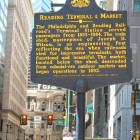 City leaders began to explore the idea of a new convention center incorporating the old Reading Terminal building on Market Street with new construction extending along Arch Street from Broad St to 11 Street. In 1988 supporters of the Market organized the Reading Terminal Market Preservation Fund to preserve the character of the Market as the convention center plans developed. The Philadelphia Convention Center opened in 1993 and by 2000 the Reading Terminal Market had 100% of its vendor spaces occupied. The rebirth of this important public space and the continuance of a long and cherished tradition of farmers’ market operation have made a major contribution to the revitalization of center city Philadelphia. The Reading terminal Market is recognized as a “Great Public Space” by the Project for Public Spaces, a nonprofit organization dedicated to the sustaining of public places that strengthen communities. A PHMC historic marker was dedicated at the site in 2003.
City leaders began to explore the idea of a new convention center incorporating the old Reading Terminal building on Market Street with new construction extending along Arch Street from Broad St to 11 Street. In 1988 supporters of the Market organized the Reading Terminal Market Preservation Fund to preserve the character of the Market as the convention center plans developed. The Philadelphia Convention Center opened in 1993 and by 2000 the Reading Terminal Market had 100% of its vendor spaces occupied. The rebirth of this important public space and the continuance of a long and cherished tradition of farmers’ market operation have made a major contribution to the revitalization of center city Philadelphia. The Reading terminal Market is recognized as a “Great Public Space” by the Project for Public Spaces, a nonprofit organization dedicated to the sustaining of public places that strengthen communities. A PHMC historic marker was dedicated at the site in 2003.
- Reading Terminal Market sign in its original placement
- The construction of the Reading Terminal Market Train Shed 1872
- 1920s advertisement for Bassett’s Ice Cream, an original market tenant which is still there today
- The Reading Terminal and Train Shed in 1893
- The Reading Terminal and Train Shed in 1937
So, be sure to put on your elastic waist pants and treat yourself to the delicious fare at the Reading Terminal Market. You can sample the “Best Sandwich in America” (the Travel Channel Show’s 2012 Champion, a roast pork offering at Tommy DiNic’s) , admire Philbert, the bronze pig by animal sculptor Eric Berg, or enjoy any of a vast array of wonderful local foods . There is quite literally something to please every taste… all offered in a historic landmark building. For More information on the Reading Terminal Market: ExplorePAHistory Sandwich Supremacy VisitPhilly Reading Terminal Market from the HABS collection at the Library of Congress
Comment Policy
PHMC welcomes and encourages topic-related comments on this blog. PHMC reserves the right to remove comments that in PHMC’s discretion do not follow participation guidelines.
Commenters and Comments shall be related to the blog post topic and respectful of others who use this site.
Commenters and Comments shall not: use language that is offensive, inflammatory or provocative (this includes, but is not limited to, using profanity, obscene, or vulgar comments); disparage other commenters or people; condone illegal activity; identify the location of known or suspected archeological sites; post personal information in comments such as addresses, phone numbers, e-mail addresses or other contact details, which may relate to you or other individuals; impersonate or falsely claim to represent a person or an organization; make any commercial endorsement or promotion of any product, service or publication.
If you would like to comment on other topics not related to this blog post but related to PHMC, please fill out the PHMC Contact Us Form.

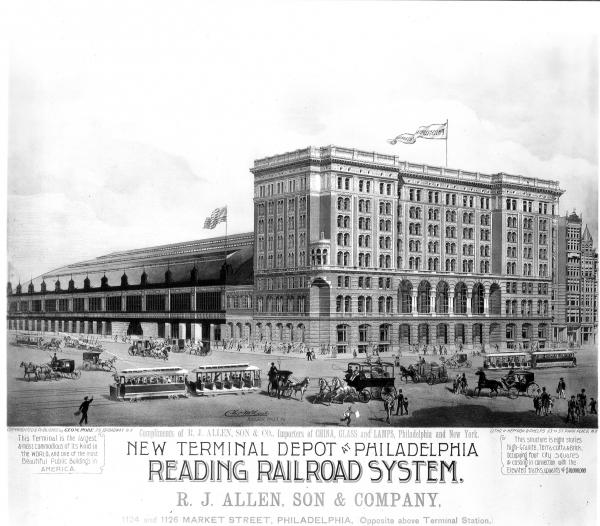
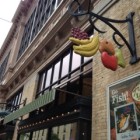
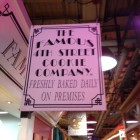
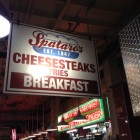
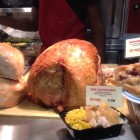
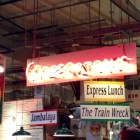

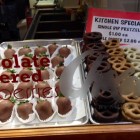
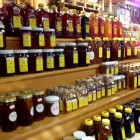
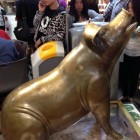
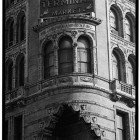

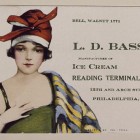
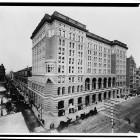
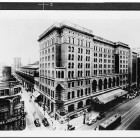
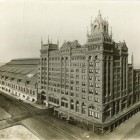
Leave a Reply